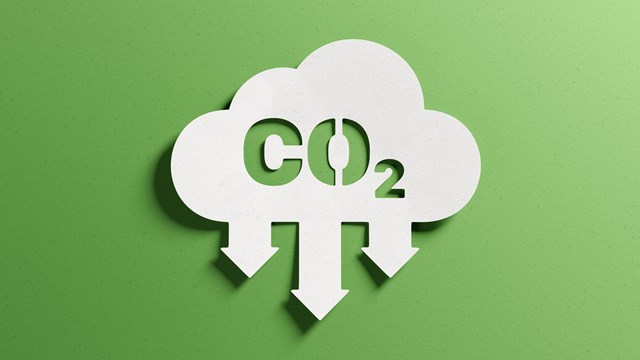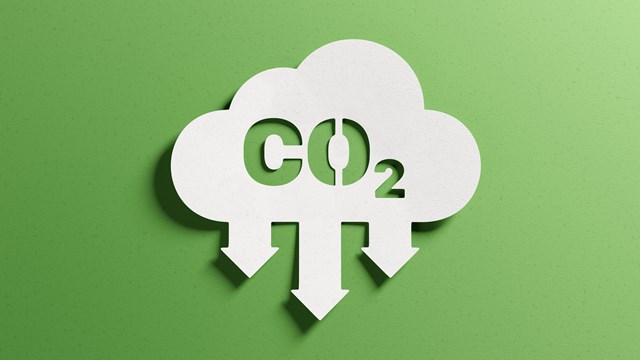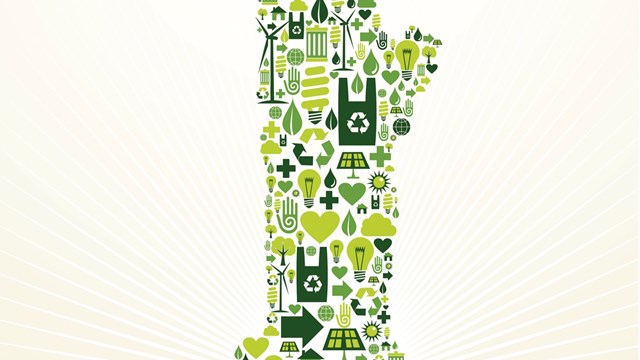
New York City officially became a leader of “green” initiatives when Mayor Michael R. Bloomberg announced his “PlaNYC 2030” initiative in 2007, although many elements of this omnibus serious of measures were public policy in the city well before it.
The Master Plan
PlaNYC 2030 is officially known as a “sustainability plan” aimed at improving the life of New Yorkers. It is divided into six main areas of focus— Land, Water, Transportation, Air, Energy and Climate Change.
Not every element of the plan necessarily addresses energy efficiency, clean technology and the like—for example, one element of PlaNYC 2030 deals with completing Water Tunnel No. 3, and another deals with expanding the city’s natural gas infrastructure. The construction of Water Tunnel No. 3 is one of the most complex and intricate engineering projects in the world to supplement the city’s drinking water. Constructed by the New York City Department of Environmental Protection (DEP), the tunnel will eventually span 60 miles and is expected to be complete by 2020.
But enough of the master plan does deal with environmental and energy-efficiency issues to make it first and foremost an energy-and-environment initiative. For example, various portions of the plan involve cleaning up brownfields (heavily polluted former industrial sites), encouraging public transportation, ferries and bicycling; creating more parks and playgrounds; planting one million trees within the five boroughs; reducing emissions in public buildings; and retrofitting or replacing diesel trucks, just to name a few.
Much of the plan deals with housing as well. PlaNYC makes a point of redeveloping former school, hospital and industrial buildings into housing, for example, as well as using transit expansions to promote new development. There are also plans to build housing over highways and railways (which was an integral part of the plan for the Far West Side of Manhattan.)
Ahead of the Curve?
Has New York City always been ahead of the curve when it comes to environmental incentives? Experts seem to feel that is has.
“From its beginning as a densely built urban city, New York has always been inherently green,” says Amalia Duarte, director of communications for the New York chapter of the U.S. Green Building Council. “By default, our living spaces are small and use less power. The city has long invested in public transportation—like subways and buses—and also protected land in upstate New York early on to provide clean, potable water.”
Bomee Jung, program director of Green Communities for the Enterprise Community Partners Inc., a nonprofit that helps build affordable housing, adds, “New York is head of the curve on many aspects of public policy relating to green building. New York State, primarily through the New York State Energy Research and Development Authority (NYSERDA) provides financial incentives and technical assistance to both small and large buildings.” We’ll read more about some of these incentives later.
The comment about public transportation is particularly prescient. During the post-World War II years, many cities radically de-emphasized and phased out public transportation—like Los Angeles’ famed “Red Car” streetcar system, for example. When this writer lived in Indianapolis in the 1980s, he found that many residents had never been on a city bus. Many of these same cities, including Los Angeles, had to build new public transit systems later on.
Here in New York City, many environmentally friendly and energy efficient initiatives have already been put into effect, even before PlaNYC 2030 was announced. For example, says Duarte, in 2005 alone, the City Council and the mayor passed 30 environment-related bills.
The City and Beyond
Within the Empire State, New York City is not alone in pursuing environmentally-friendly policies. Michael Colgrove, senior project manager for multifamily building performance in NYSERDA’s New York City offices, points to towns in the Hudson Valley—such as Woodstock and New Paltz—that have hosted similar initiatives of their own.
Woodstock, for example, adopted a “zero carbon” initiative that seeks to reduce the volume of carbon emissions thought to contribute to global warming. And in New Paltz, students at the State University have started their own green initiatives, including solar panels on the roof of the gymnasium.
In Westchester County, the Town of Greenburgh (which includes the villages of Ardsley, Dobbs Ferry, Irvington, Hastings and Tarrytown) sponsored a Green Living Fair. The town, on its website, includes information about tax incentives for energy efficiency, how to buy Energy Star appliances for your home, and the like.
And in Levittown on Long Island—long a symbol of suburban blandness and conformity—the Green Levittown program aims to persuade residents to upgrade their homes, improving energy efficiency and cutting fuel bills.
Colgrove, by the way, echoes some of the other positive comments about New York City and Mayor Bloomberg. “No other mayor of New York City has ever launched such a wide-ranging initiative,” he says. “He stands alone among mayors of the city.”
Wherever these programs are proposed, how successful have they been? Many would say that, in the words of the old song, “it’s too soon to know.” Still, there are more than 300 Leadership in Energy and Environmental Design (LEED) registered projects in the pipeline in this city, although the concept took awhile to catch on.
“If you go as far back as the Clean Water Act [passed in 1972] at the federal level, it trickles down to the state,” says Duarte. “For the past two or three years, you can finally go swimming in the East River. That’s proof positive that these policies can work.”
Programs for Residential Building
Now we get to the heart of the matter—at least for readers of the Cooperator—which specific programs and incentives exist purely for residential developers and building administrators to encourage them to go greener and reduce their environmental impact?
As we’ve mentioned before, the main “clearinghouse” for these incentives, at least in New York, is NYSERDA. Colgrove mentions several programs, all of them detailed on the agency’s website (www.nyserda.org).
The Multifamily Building Performance Program for New Construction provides “performance partners” who work with the design team to incorporate potential energy efficiency options into the building’s design. Energy savings come from higher-efficiency cooling and heating, energy-saving lighting strategies, better insulation and more. “The economics for this,” says Duarte, “work best with buildings of 100 units or more.”
There are also recently approved special incentives to help buildings achieve LEED certification, to be financed out of a special Green Buildings Fund. Buildings achieve LEED certification at either a Silver, Gold, or Platinum level as a result of a special rating system that assess factors including water savings, sustainable selection, indoor environmental community, energy efficiency and more. In addition, NYSERDA maintains a special Energy Smart Loan Fund with reduced interest rates.
And for retrofits of existing building, NYSERDA maintains a separate component of the aforementioned Multifamily Building Performance Program. Eligible buildings are required to “benchmark” their energy performance compared to similar buildings, then are assigned a performance target to achieve. After they achieve these goals, the buildings are eligible for various financial incentives. The U.S. Green Buildings Council, which originated and maintains LEED certification programs, also maintains one for existing buildings.
One person who can testify about how these incentives are helpful is Russell Albanese, president of Albanese Development, a Garden City, Long Island-based firm that pioneered green development with the first green residential building in North America—the Solaire. His firm later developed the Verdesian, which recently became the first residential development in the U.S. to obtain LEED Platinum certification, and is now developing the Visionaire. All are located in Battery Park City.
NYSERDA, he says, was “very helpful” in the case of the Solaire, providing a $100,000 grant for LEED design assistance and energy modeling, an incentive of more than $300,000 for an energy-efficient mortgages, a $90,000 grant for solar panels and more. The Verdesian also received NYSERDA incentives. Albanese also praises the support of the Battery Park City Authority for installing these measures.
Among the features of Albanese’s buildings, he says, are solar panels, a “green roof” that makes the building less susceptible to heat, and more efficient windows (that make the buildings less susceptible to heat), lower energy bills, a 25-percent reduction in the building’s water-sewer rate, and recycling of waste water for cooling and irrigation.
Where To Get Info
What can condo or co-op boards and managers who are interested in learning more about these programs and in getting involved do? Well, for one thing, they can call NYSERDA or the Green Buildings Council.
Jung adds that “there are many organizations providing information about green building in New York City. At Enterprise Community Partners, we work with owners and developers of affordable housing with the goal of eventually greening all affordable housing.”
Other professional organizations, such as the American Institute of Architects’ local chapter, also serve the community at large, as do non-profits such as GreenHomeNYC, Sustainable South Bronx, Sustainable Flatbush, Solar One and others. And that’s not to mention co-op and condo associations, of course, such as the Council of New York Cooperatives and Condominiums and the Federation of New York Housing Cooperatives and Condominiums.
All in all, “green” or sustainable building (or retrofitting) is an idea whose time has come. Those co-op and condo board members and managers who are interested can count on plenty of support.
Raanan Geberer is a freelance writer and editor living in New York City.









Leave a Comment